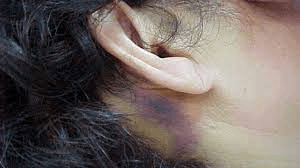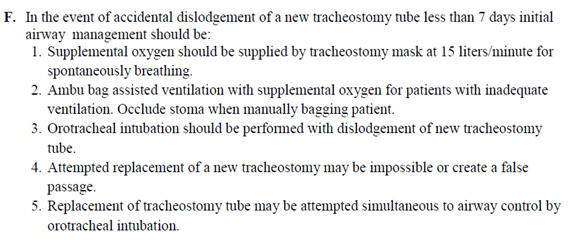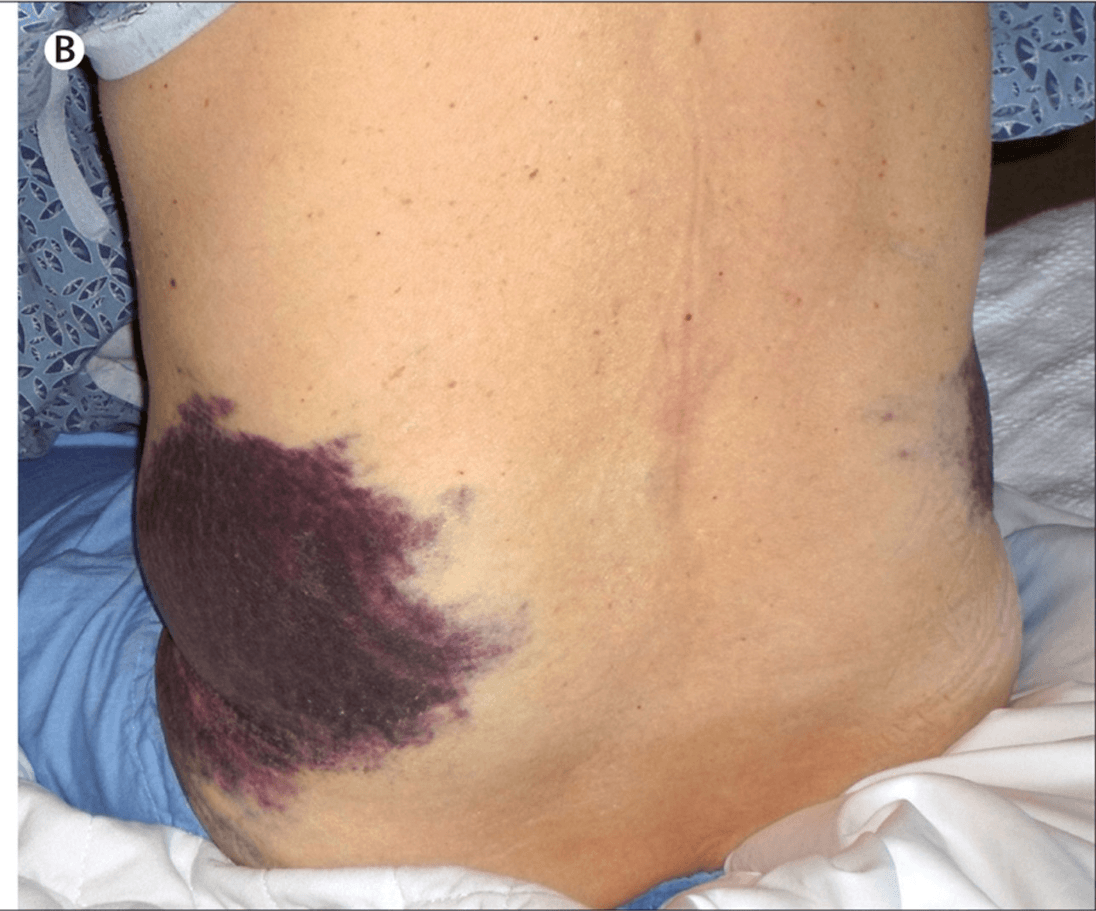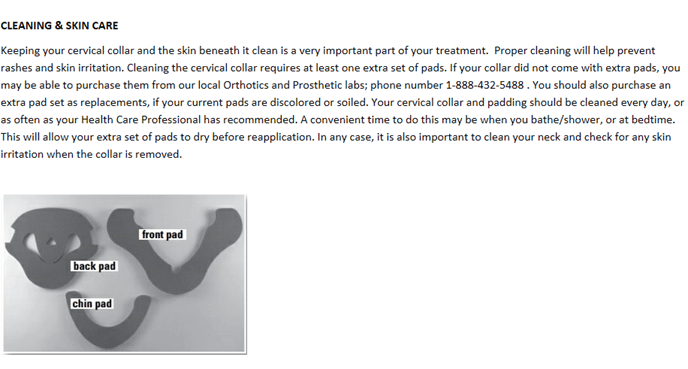A life threatening hypermetabolic response to anesthetics and succinylcholine
What is malignant hyperthermia. Dantrolene is the antidote to administer.
What is the most common preventable cause of death in a trauma patient?
Hemorrhagic shock
TNCC pg. 71

What sign is this?
Battle sign- indicated basilar skull fracture.
TNCC pg. 111
How should a chest tube cannister be cared for?
Should be kept below the chest with no dependent loops in the tubing to avoid backflow.
This lab value is used to assess the degree of acidosis
what is serum lactate level
TNCC pg. 84
What is a classic symptom of a splenic injury?
Left shoulder pain (Kehr's Sign)
TNCC pg. 151
Name two possible complications of orthopedic injuries/surgeries
DVT, fat embolism, compartment syndrome, hemorrhage, and wound infection.
TNCC pg. 194
Case- your patient is admitted to the trauma service for bilateral open femur fractures. You find them to be cool, clammy, tachycardic and hypotensive. Which type of shock do you suspect?
Hypovolemic shock secondary blood loss from femur fractures. In hypovolemic shock, decreased circulating volume results in decreased venous return and decreased preload.
TNCC pg. 78
Patient is intubated in the ICU. They being to develop fevers, increased ventilator requirements, and leukocytosis. What are these signs of?
DOUBLE JEOPARDY- Name two elements of the **** bundle that NURSING can implement to prevent this condition
Ventilator Associated Pneumonia.
Hand washing, suctioning, oral care every 4 hours, HOB 30-45, ETT placement verification Qshift, PPI as ordered, spontaneous awake trials.
Your trauma patient who had a trach placed yesterday became confused and accidentally dislodged their trach. As the primary nurse, what are your first actions/priorities?
Call upon a fellow nurse to page for assistance and follow scribble policy CO 2.650 airway care-accidental extubation-care of the adult patient with a tracheostomy:

This management strategy allows a lower than normal blood pressure to avoid "popping the clot""
Permissive hypotension or hypotensive resuscitation
TNCC pg. 80

What sign is this and what does it indicate?
Grey Turner's sign- indicates spleen injuries or retroperitoneal bleeding/injury
TNCC pg. 152
Your patient with a spinal injury is being discharged with a collar to wear for extended use. What instructions and supplies are important to give them regarding collar care?
 Aspen collar is removed daily for skin checks, pads are cleaned and changed daily, and an extra set of new pads should be provided prior to discharge.
Aspen collar is removed daily for skin checks, pads are cleaned and changed daily, and an extra set of new pads should be provided prior to discharge.
List three of the BMC sepsis indicators
tachypnea, tachycardia, hypotension, fever, hypoxia
Name two signs (or symptoms) of increased intracranial pressure
headache, behavioral changes, GCS decline, nausea and vomiting, bradycardia, hypotension, widened pulse pressure.
TCAR pg. 157
A victim of a violent crime has just arrived on your floor and is identified with their surname (legal name). What action must you take to ensure the safety of patient and staff?
Request an alias name change form through admitting and request security surveillance for 48 hours.
Provide the patient/ family spokesperson with an informational sheet, which explains the purpose of the victims of violence trauma safety policy and the visitor restrictions and the guidelines.
Patient consent is not required to assign an alias, however, the hospital has an obligation to inform patients of their visitation rights, as well as any restrictions or limitations on those rights that are clinically necessary or reasonable to ensure the safety of patients and staff.
CO 1.400- Patient alias/protective name change
CO 9.604 Victims of violence trauma safety